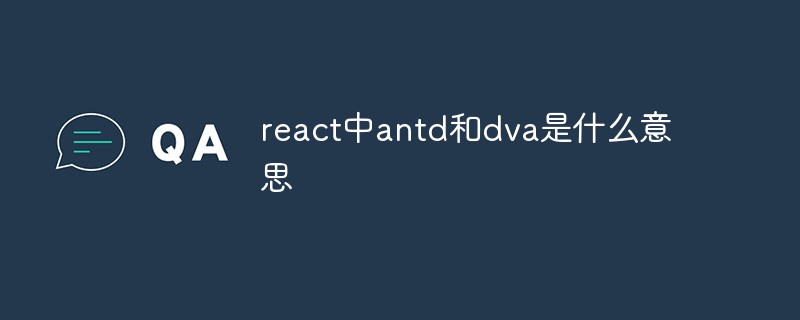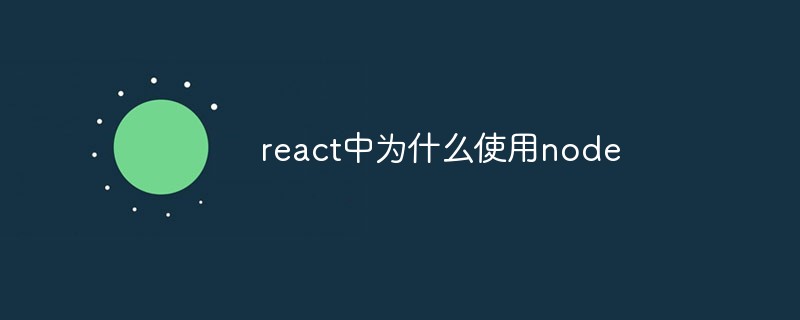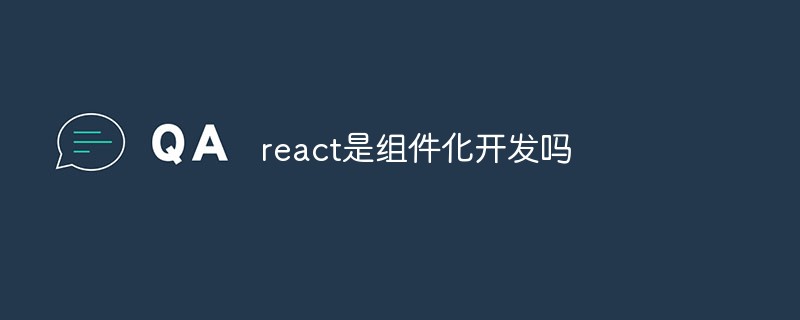 Backend Development
Backend Development Golang
Golang Best practices for building high-performance scalable web applications using Go and React
Best practices for building high-performance scalable web applications using Go and ReactAs web applications become more and more popular, it becomes increasingly important to build applications that are performant, scalable, and maintainable. Go language and React are two popular tools that offer great advantages in building high-performance web applications. This article will introduce the best practices for building high-performance, scalable, and easy-to-maintain web applications using the Go language and React.
Go language is an open source programming language developed by Google and focuses on high performance and concurrent programming. The Go language has a concise language structure, an efficient compiler, and a fast runtime. This makes the Go language ideal for building high-performance web applications. Meanwhile, React is a JavaScript library for building user interfaces, maintained by Facebook. React is highly composable and reusable and can help us build flexible user interfaces.
The following will introduce the best practices for building high-performance web applications using the Go language and React:
- Writing a web server using the Go language
Go The language has a fast HTTP server library with high concurrency performance. Web servers written in Go can easily handle high concurrent traffic and provide fast response times. When writing a web server, it is recommended to use the "net/http" package from the standard library, which provides many useful functions for building web applications. Additionally, popular web frameworks such as Gin and Echo can be used.
- Building User Interfaces with React
React is a JavaScript library for building user interfaces. React is highly composable and reusable, making it easy to build flexible user interfaces. Developing with React allows us to manage the state of the application more easily, thus simplifying application development and maintenance. Additionally, using React can improve the performance of your user interface and provide a better user experience.
- Storing data in a database
In web applications, it is very important to use a database to store data. The speed of data storage and retrieval will directly affect the performance of web applications. Go language supports multiple databases, such as MySQL, PostgreSQL, MongoDB, etc. When choosing a database, base your choice on the needs of your application.
- Use caching to improve performance
In many web applications, using caching can greatly improve performance. The Go language has many popular caching libraries such as GoCache. Using cache can reduce network overhead and reduce the pressure of database reading and writing. Additionally, caching can improve application scalability.
- Use message queues to improve scalability
In many web applications, using message queues can improve the scalability of the application. Using message queues you can easily handle large numbers of requests and distribute them to available processors. The Go language supports many popular message queue libraries such as RabbitMQ and AWS SQS.
- Automated deployment
Automated deployment can greatly simplify the deployment process and improve the reliability of the application. Applications can be easily deployed into production, managed and monitored using automated deployment tools such as Docker and Kubernetes.
In short, using Go language and React can easily build high-performance, scalable, and easy-to-maintain web applications. Using the above best practices can help us build high-quality web applications, thereby improving application performance and reliability. At the same time, many common mistakes can be avoided, allowing us to build satisfactory web applications more quickly.
The above is the detailed content of Best practices for building high-performance scalable web applications using Go and React. For more information, please follow other related articles on the PHP Chinese website!
 react中canvas的用法是什么Apr 27, 2022 pm 03:12 PM
react中canvas的用法是什么Apr 27, 2022 pm 03:12 PM在react中,canvas用于绘制各种图表、动画等;可以利用“react-konva”插件使用canvas,该插件是一个canvas第三方库,用于使用React操作canvas绘制复杂的画布图形,并提供了元素的事件机制和拖放操作的支持。
 React是双向数据流吗Apr 21, 2022 am 11:18 AM
React是双向数据流吗Apr 21, 2022 am 11:18 AMReact不是双向数据流,而是单向数据流。单向数据流是指数据在某个节点被改动后,只会影响一个方向上的其他节点;React中的表现就是数据主要通过props从父节点传递到子节点,若父级的某个props改变了,React会重渲染所有子节点。
 react中antd和dva是什么意思Apr 21, 2022 pm 03:25 PM
react中antd和dva是什么意思Apr 21, 2022 pm 03:25 PM在react中,antd是基于Ant Design的React UI组件库,主要用于研发企业级中后台产品;dva是一个基于redux和“redux-saga”的数据流方案,内置了“react-router”和fetch,可理解为应用框架。
 react中为什么使用nodeApr 21, 2022 am 10:34 AM
react中为什么使用nodeApr 21, 2022 am 10:34 AM因为在react中需要利用到webpack,而webpack依赖nodejs;webpack是一个模块打包机,在执行打包压缩的时候是依赖nodejs的,没有nodejs就不能使用webpack,所以react需要使用nodejs。
 react是组件化开发吗Apr 22, 2022 am 10:44 AM
react是组件化开发吗Apr 22, 2022 am 10:44 AMreact是组件化开发;组件化是React的核心思想,可以开发出一个个独立可复用的小组件来构造应用,任何的应用都会被抽象成一颗组件树,组件化开发也就是将一个页面拆分成一个个小的功能模块,每个功能完成自己这部分独立功能。
 react中forceupdate的用法是什么Apr 19, 2022 pm 12:03 PM
react中forceupdate的用法是什么Apr 19, 2022 pm 12:03 PM在react中,forceupdate()用于强制使组件跳过shouldComponentUpdate(),直接调用render(),可以触发组件的正常生命周期方法,语法为“component.forceUpdate(callback)”。
 react和reactdom有什么区别Apr 27, 2022 am 10:26 AM
react和reactdom有什么区别Apr 27, 2022 am 10:26 AMreact和reactdom的区别是:ReactDom只做和浏览器或DOM相关的操作,例如“ReactDOM.findDOMNode()”操作;而react负责除浏览器和DOM以外的相关操作,ReactDom是React的一部分。
 react与vue的虚拟dom有什么区别Apr 22, 2022 am 11:11 AM
react与vue的虚拟dom有什么区别Apr 22, 2022 am 11:11 AMreact与vue的虚拟dom没有区别;react和vue的虚拟dom都是用js对象来模拟真实DOM,用虚拟DOM的diff来最小化更新真实DOM,可以减小不必要的性能损耗,按颗粒度分为不同的类型比较同层级dom节点,进行增、删、移的操作。


Hot AI Tools

Undresser.AI Undress
AI-powered app for creating realistic nude photos

AI Clothes Remover
Online AI tool for removing clothes from photos.

Undress AI Tool
Undress images for free

Clothoff.io
AI clothes remover

AI Hentai Generator
Generate AI Hentai for free.

Hot Article

Hot Tools

Atom editor mac version download
The most popular open source editor

MantisBT
Mantis is an easy-to-deploy web-based defect tracking tool designed to aid in product defect tracking. It requires PHP, MySQL and a web server. Check out our demo and hosting services.

Dreamweaver Mac version
Visual web development tools

PhpStorm Mac version
The latest (2018.2.1) professional PHP integrated development tool

Safe Exam Browser
Safe Exam Browser is a secure browser environment for taking online exams securely. This software turns any computer into a secure workstation. It controls access to any utility and prevents students from using unauthorized resources.





